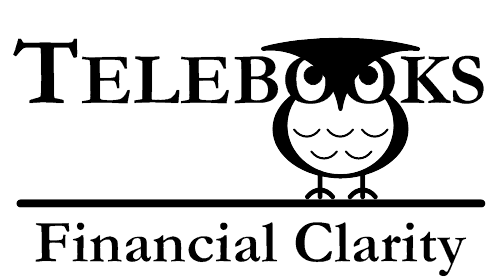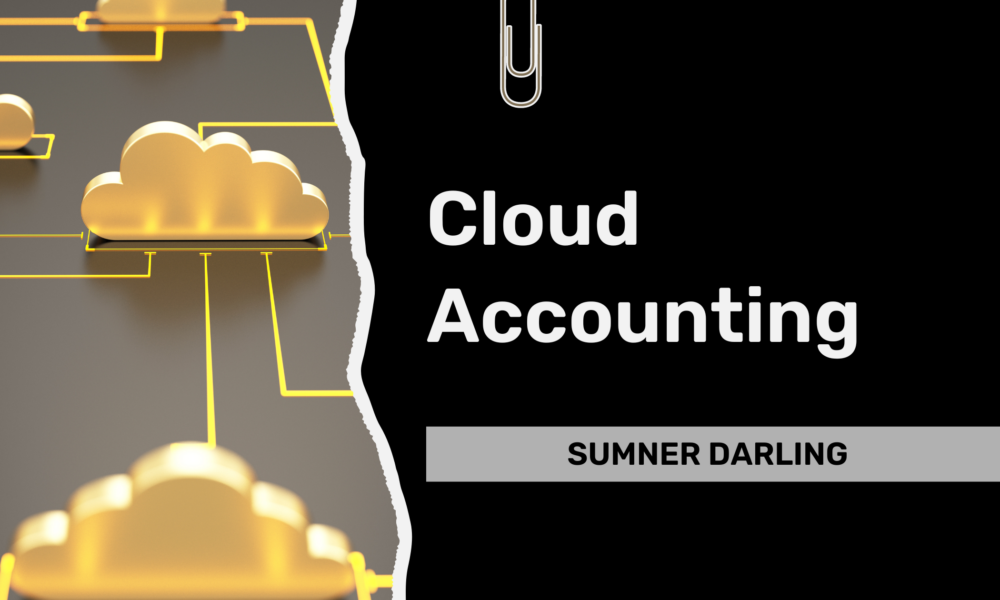Managing the finances of a small architecture firm can be challenging, right? You’ve got project billing, payroll, and financial reporting to juggle, and often you’re stuck with disconnected tools or spreadsheets. That’s where cloud accounting for architecture firms steps in—it serves as the central hub for all your financial data, bringing everything together in one place. With cloud accounting software and applications, you can simplify your financial processes, gain real-time insights, and improve overall efficiency.

In this post, we’ll share expert tips from industry leaders like Blake Oliver, David Leary, Kathy Gregory, and Geni Whitehouse. You’ll learn how cloud accounting software can save time, reduce errors, and boost efficiency in your firm.
What Is Cloud Accounting for Architecture Firms?
Cloud accounting for architecture firms is a financial management tool that allows you to manage your firm’s finances online. Unlike traditional accounting software that requires installation on specific computers, cloud accounting can be accessed from anywhere with an internet connection. This is a game-changer for architecture firms that often have team members working remotely or on-site at projects.

But why should architecture firms care about cloud accounting in the first place?
Well, architecture firms have unique needs. You handle multiple projects, track billable hours, and manage complex invoices. Cloud accounting for architecture firms helps streamline these processes by automating tasks, centralizing financial data, and providing real-time insights. It serves as the central hub for all your financial data, reducing manual work and giving you a clearer picture of your firm’s financial health. Popular options include QuickBooks Online, Xero, and FreshBooks.
Key Benefits of Cloud Accounting for Architecture Firms
Why should architecture firms embrace cloud accounting? The answer is simple: it’s more than just a tool for managing finances. Cloud accounting for architecture firms can transform how you operate by improving efficiency, accuracy, and financial planning. Let’s explore the key benefits.

1. Centralized Financial Data
With cloud accounting for architecture firms, all your financial data is in one place. Gone are the days of switching between siloed tools for billing, payroll, and bookkeeping. Centralizing your data not only reduces errors but also gives you a real-time overview of your firm’s financial health. When everything is connected, from billable hours to client invoices, you can track your firm’s cash flow more accurately.
This centralization is particularly valuable for small architecture firms, where teams juggle multiple projects and need access to financial systens on the go. By having everything in one place, you simplify workflows, improve communication, and allow team members to focus more on the project and less on administrative tasks.
2. Improved Billing Accuracy
Manual billing processes can easily lead to mistakes, which may cause disputes with clients or delays in payments. Cloud accounting tools like BigTime Software or Monograph integrate directly with your financial system to track billable hours and perform invoicing based on project milestones. This ensures you bill accurately and on time, improving cash flow and client satisfaction.
For architecture firms that work on multiple projects at once, billing can get complex. By implementing your invoicing with cloud accounting software, you reduce the risk of human error and avoid underbilling for services rendered. This increased accuracy leads to fewer client disputes and helps build trust in your business relationships.
3. Enhanced Payroll Efficiency
Processing payroll manually is time-consuming and prone to errors. Cloud-based tools like Gusto or QuickBooks Payroll automate this process, ensuring employees are paid accurately and on time. Payroll automation linked to your project budgets also means that you can easily track labor costs, which is critical for keeping your projects on budget.
For small architecture firms, where teams are often small and resources limited, efficient payroll management saves valuable time. Automating payroll frees up your staff to focus on more strategic tasks and ensures that payroll processing doesn’t become a bottleneck during busy periods.
4. Real-Time Financial Insights
What would it mean for your firm to have instant access to financial data at any time? With cloud accounting for architecture firms, you don’t have to wait for end-of-month reports to understand your financial health. Tools like Fathom or Jirav provide real-time dashboards showing key metrics like cash flow, profitability, and project performance.
For architecture firms that rely on accurate financial data to make business decisions, having real-time insights is a game-changer. You can see which projects are most profitable, identify issues before they escalate, and make adjustments to ensure your firm stays on track. This level of visibility allows you to operate more efficiently and with greater confidence.
5. Financial Planning
Want to grow your firm in the coming years? Cloud accounting software doesn’t just help with day-to-day management—it also enables financial planning. Tools like LivePlan allow you to create multi-year financial forecasts and run scenario analyses to prepare for growth.
For small architecture firms, planning for the future is essential. With cloud accounting, you can align your financial goals with your business strategy. Whether you’re looking to hire more staff, invest in new technology, or expand your service offerings, having a clear financial roadmap helps you make smarter, more informed decisions. Long-term financial planning ensures you’re ready for growth and can capitalize on new opportunities without putting your firm’s financial health at risk.
Expert Tips to Boost Efficiency with Cloud Accounting
Now that we’ve covered the benefits, let’s talk about how to implement cloud accounting for architecture firms. These expert tips will help you get the most out of your cloud accounting tools, incorporating insights from industry leaders.

1. Build an Application Stack
As Blake Oliver and David Leary often point out, the real power of cloud accounting comes when you build an integrated application stack. It’s not just about choosing the right software—it’s about ensuring that all your tools work seamlessly together to manage your firm’s financial needs in one place. For architecture firms, this means selecting tools that align with both your project-based workflows and financial goals. Here’s an ideal stack:
- QuickBooks Online for core accounting tasks, including reconciliation and financial reporting.
- BigTime Software for project billing and tracking billable hours, ensuring your projects stay on track and your clients are billed accurately.
- Gusto for payroll automation, saving you time and ensuring your employees are paid on time, every time.
- Fathom for real-time reporting, giving you clear insights into your firm’s cash flow and profitability.
- LivePlan for financial planning, helping you prepare for growth by forecasting revenue and expenses over the next few years.
By combining these tools, you’ll centralize your firm’s operations and create a streamlined system that improves accuracy and efficiency. This also ensures you can make informed financial decisions based on real-time data.
2. Implement Standard Operating Procedures (SOPs)
Geni Whitehouse emphasizes the importance of creating clear, repeatable processes that remove uncertainty from daily tasks. For architecture firms, developing Standard Operating Procedures (SOPs) for tasks like billing, payroll, and bookkeeping can significantly reduce errors and ensure consistency. Having SOPs in place is especially useful when dealing with complex projects where financial tracking needs to be precise.
When SOPs are integrated with your cloud accounting tools, they allow every member of your team to follow a standardized process, which not only improves efficiency but also makes it easier to train new employees. SOPs also help you maintain control over your financial processes, no matter the size of your firm. As a result, your team can focus on higher-value tasks, like managing client relationships or optimizing project resources, knowing that the basics are taken care of.
3. Train Your Team
Kathy Gregory advises that training is the foundation of successful cloud accounting implementation. Without proper training, even the best tools can become underused or misused, leading to inefficiencies. For small architecture firms, where every team member plays a critical role, offering hands-on training is key to ensuring everyone understands how to use your accounting tools effectively.
Training should cover more than just basic functions—focus on showing your team how to customize dashboards, generate reports, and use real-time data to make decisions. When your staff is confident using the software, they’ll be able to track projects, manage budgets, and identify issues before they escalate. This not only boosts productivity but also helps reduce the chances of errors in your financial processes.
4. Gradually Import Financial Data
Blake Oliver recommends a step-by-step approach to importing financial data into your new cloud accounting system. For architecture firms, financial data isn’t just about expenses and payroll—it’s about project timelines, milestones, and billable hours. Start by importing essential data, like project billing and payroll, and then move on to more detailed financial information.
This gradual approach gives you the time to identify and address any potential issues before they become larger problems. Testing your system in stages ensures that everything functions properly and allows your team to adjust to the new workflows. Rushing the process can lead to data errors, which can disrupt your projects and complicate your financial tracking. Taking it step-by-step helps you build a system that works for your firm’s specific needs.
5. Monitor and Adjust
As David Leary frequently points out, the true value of cloud accounting for architecture firms comes from the ability to access real-time data and adjust your strategies accordingly. With tools like Fathom or Jirav, you can monitor key metrics like cash flow and profitability on a daily basis. But gathering data isn’t enough—you need to use it to optimize your processes.
Regular monitoring allows you to identify trends, spot issues early, and make informed decisions that align with your firm’s goals. For example, if you notice that a project is falling behind on its budget, you can make immediate adjustments to resource allocation. Real-time insights give you the power to stay proactive, ensuring that your firm remains profitable and efficient. Continuous monitoring and adjustment are key to keeping your firm on track, both financially and operationally.
Real-World Example – Elemental Architects
The following example illustrates how a small architecture firm might leverage cloud accounting tools. While Elemental Architects is fictional, the tools and strategies are real and practical for firms like yours.

Problem:
Elemental Architects, a small architecture firm, struggled with disconnected systems for billing, payroll, and financial reporting. Each department was using its own set of tools—manual spreadsheets for payroll, an outdated software for invoicing, and no standardized way to track project profitability. This lack of integration led to inefficiencies, frequent errors, and an inability to track the financial health of individual projects. Additionally, the team was resistant to adopting new tools, concerned that learning new software would add more stress.
Solution:
Elemental Architects realized they needed a centralized system to manage their financial operations. They started with a needs assessment to identify inefficiencies in billing, payroll, and project tracking. Their solution was to adopt cloud accounting for architecture firms with QuickBooks Online as the central hub.
The firm built an application stack to streamline financial management:
- QuickBooks Online for accounting, managing income, expenses, and payroll.
- BigTime Software for project-based billing and tracking billable hours.
- Gusto for automating payroll.
- Fathom for real-time financial reporting and insights.
- LivePlan for long-term financial forecasting and scenario planning.
To ensure smooth adoption, the team implemented Standard Operating Procedures (SOPs) and provided training on billing and payroll processes. They gradually imported financial data, testing the system in phases to minimize errors. Regular monitoring and adjusting allowed them to optimize workflows and improve efficiency.
By centralizing their financial processes with this application stack, Elemental Architects reduced manual tasks, improved accuracy, and gained valuable insights into project profitability and firm growth.
Results:
- 25% improvement in billing accuracy: BigTime Software allowed the firm to track billable hours more precisely, which led to more accurate invoicing and fewer disputes with clients.
- 50% reduction in payroll processing time: Thanks to Gusto’s payroll automation, the administrative team spent far less time managing payroll, allowing them to focus on higher-value tasks.
- Clearer financial insights: With Fathom’s real-time dashboards, Elemental Architects could instantly see their cash flow, profitability, and project performance, leading to better decision-making and proactive management.
- Strategic growth planning: LivePlan enabled the firm to create financial forecasts, run scenario analyses, and plan for future growth. This allowed the leadership team to align their business goals with their financial capabilities, ensuring they stayed on track toward their long-term objectives.
- Team adoption and reduced resistance: By involving the team early in the decision-making process and providing thorough training, resistance to the new system was minimal. The team saw firsthand how the new tools made their work easier and more efficient.
Conclusion
Cloud accounting for architecture firms isn’t just a tool—it’s the central hub for all your financial data. By choosing the right tools, like QuickBooks Online, Xero, and FreshBooks, and integrating them with applications tailored to your architecture firm’s needs, you’ll simplify workflows, reduce errors, and position your firm for growth.
Ready to take your firm’s efficiency to the next level? Start by assessing your current processes, build your application stack, and get your team trained. With the right setup, cloud accounting will provide the clarity and control you need to succeed.to our blog or explore how Telebooks Network can help your firm streamline its financial operations and plan for the future.




